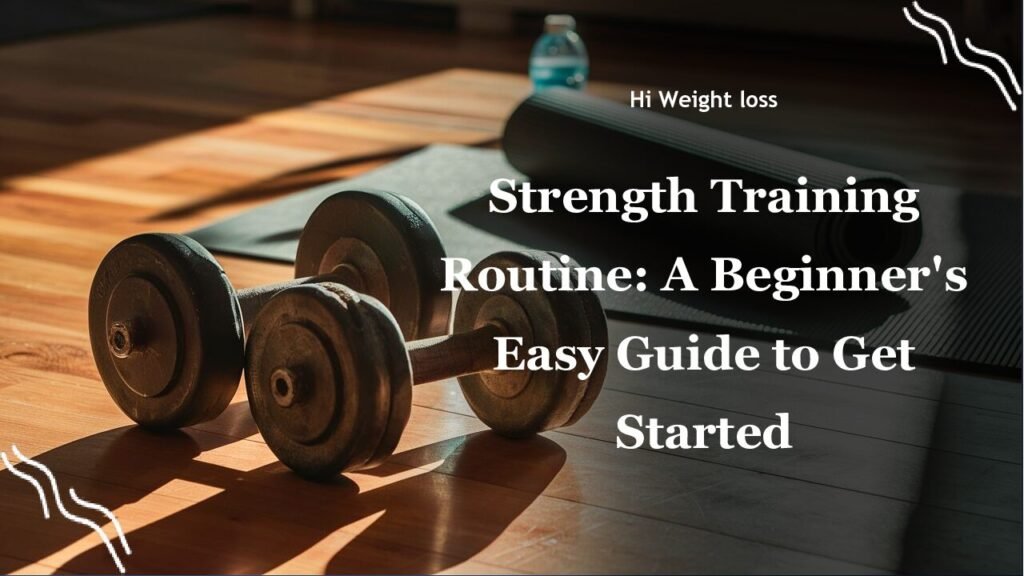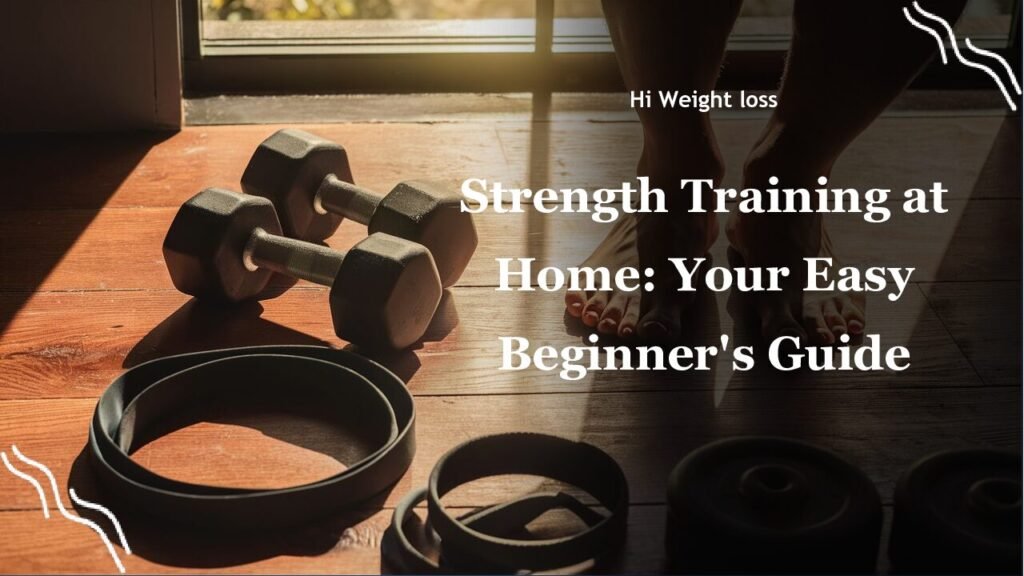“`
Struggling to lose weight and wondering if a quick 20-minute strength training session is all you need? It’s a common question, and many of us have been there, hoping for a magic bullet to shed those extra pounds. The truth is, while 20 minutes of strength training can help with weight loss, it’s not the whole story. This article will break down how strength training fits into a weight loss plan and what else you need to consider to reach your goals. You might be surprised at how a few tweaks can make all the difference.
Is 20 Minutes of Strength Training Enough to Lose Weight?
Understanding the Role of Strength Training in Weight Loss
Many people believe that cardio is the only way to lose weight, but strength training plays a crucial, if often underestimated, role. It’s not just about building muscle; it’s about revving up your metabolism. The more muscle mass you have, the more calories you burn, even at rest. This is because muscle tissue is more metabolically active than fat tissue.
Think of it this way, you might burn 300 calories during a 30-minute run, but by consistently building more muscle, you could be burning an extra 100 calories every day without even working out. That’s why strength training can be a significant factor in long-term weight management. My own journey started with a similar mindset. I thought only cardio would help me lose weight, but I was plateauing. Once I incorporated strength training, I saw a significant shift in my body composition.
How 20 Minutes of Strength Training Can Contribute to Weight Loss
So, can a short 20-minute session of strength training really make a difference? The short answer is yes, but with some important context. Twenty minutes of focused strength training can be incredibly effective, especially if you’re doing a full-body workout that targets major muscle groups. The key is to ensure the exercises are challenging enough to cause muscle fatigue. This can be achieved by using weights that push your muscles, and maintaining proper form to get the most from each repetition.
It’s not just about the immediate calorie burn during your workout, it’s about the afterburn. Strength training creates micro-tears in your muscle fibers, and your body needs to work to repair these, leading to an increased metabolic rate for hours after you’ve finished your session. This is often referred to as excess post-exercise oxygen consumption (EPOC). Therefore, a consistent 20-minute strength training routine can help in this after-burn and in building muscle.
Here’s a story. My friend, Sarah, felt overwhelmed with the idea of spending hours in the gym. She started with 20-minute strength training sessions three times a week, and over a few months, she saw a difference in her clothes fitting better. She wasn’t just losing weight; she was building a stronger and healthier body. She found some of her favorite 20-minute workouts on Youtube, a great place for finding routines.

The Importance of Combining Strength Training with Other Exercise
While strength training is fantastic, it’s not a standalone solution. For optimal weight loss, you really should combine it with other types of exercise, particularly cardiovascular workouts. This combination will create a well-rounded fitness program. Cardio helps you burn calories while you’re doing it and strengthens your cardiovascular system, while strength training builds muscle and boosts your metabolism. This is a much more effective strategy for weight management than strength training alone.
High-intensity interval training (HIIT), for example, is an excellent complement to strength training. A 20-minute full-body workout, which includes HIIT and strength training, can significantly help burn calories and boost metabolism, contributing to weight loss, as Health Shots points out. These types of workouts can be structured to include warm-up sets, cardio sets, strength training, and a cool-down, making them an efficient way to improve overall fitness. In fact, HIIT is a time-efficient way to burn calories. PureGym notes that HIIT workouts, including those lasting 20 minutes, are effective for burning calories and supporting weight loss, though they recommend you limit these sessions to 3 times a week.
The Crucial Role of Diet in Weight Loss
Let’s face it: you can’t out-exercise a bad diet. No matter how much strength training you do, if you’re not also eating a healthy and balanced diet, you’re going to have a hard time losing weight. Weight loss fundamentally comes down to creating a calorie deficit, which means you’re consuming fewer calories than you’re burning. While exercise, including strength training, contributes to your calorie burn, it is the combination of the two that will help. A balanced diet rich in fruits, vegetables, lean proteins, and whole grains, and lower in processed foods and sugar, is really important for any type of weight loss.
Think of your body as a car; exercise is the fuel, but diet is the engine that makes the whole car run. In fact, a 4-week workout plan for weight loss, as Healthline shows, includes a combination of strength training, interval training, and low-intensity cardio. It’s this combination that works. In my own experience, I noticed my strength training efforts paid off so much more once I started focusing on my diet.
Is 20 Minutes of Strength Training Daily Enough for Weight Loss?
The question of daily strength training is interesting. Twenty minutes of daily strength training can be beneficial, but it is important to listen to your body. You might consider having rest days in between your workout routines, as your muscles need time to recover and rebuild. This doesn’t mean you need to be completely inactive on rest days, just focus on lower impact exercises, like walking. The intensity of your workout also matters a lot. It is very important that you make sure you are working at a level that is appropriate to you.
A balanced approach might look like this: strength training three to four times a week, combined with a couple of days of cardio, along with a healthy diet. This ensures that your muscles have time to recover. You can modify your workouts based on your energy levels to avoid injury and to avoid burnout. I found that mixing up my routines and incorporating rest days, made it so much easier to stay consistent.
How to Make the Most of Your 20-Minute Strength Training Sessions
Okay, so 20 minutes can be effective, but how do you make the most of that time? First, focus on compound exercises. These are movements that work multiple muscle groups at once, like squats, deadlifts, push-ups, and rows. These exercises are far more efficient than isolation exercises that target just one muscle group. Second, ensure you are using the right weight or resistance. Use weights that will cause your muscles to feel fatigued by the end of each set. If you can go way beyond the prescribed number of repetitions, you might need to increase the weight.
Third, keep your rest periods short. The less rest time you have, the more time your body spends in the work phase, which helps to maximize calorie burn and muscle engagement. Fourth, make sure you are using the right form. If you are unsure of your form, it might be a good idea to get some training. The wrong form can make the workout ineffective and potentially injure you. Finally, consistency is key. You should try to perform your workouts consistently, according to the schedule you set for yourself.
Below is a table that summarizes the key factors of your workout routine:
| Factor | Details |
|---|---|
| Type of Exercises | Compound exercises (squats, deadlifts, push-ups, rows) |
| Weight/Resistance | Use weights that cause muscle fatigue |
| Rest Periods | Short rest periods |
| Form | Proper form |
| Consistency | Workout regularly according to your schedule |
Conclusion
So, is 20 minutes of strength training enough to lose weight? While it won’t work magic on its own, it is a valuable piece of the weight loss puzzle. When combined with other forms of exercise, like cardio and HIIT, and of course a healthy diet, a regular 20-minute strength training routine can help you lose weight and build muscle. Just like my friend Sarah, starting small and being consistent can make a big difference. Remember, it’s not just about losing weight; it’s about becoming stronger and healthier in the process.
What are some of your favourite strength training exercises? What combination of exercises do you like to do? Let me know in the comments below, and share this article with anyone who might find it helpful. It’s time to start moving and change those habits.
FAQ
Can 20 minutes of strength training alone cause significant weight loss?
No, while strength training is beneficial, it’s most effective when combined with a balanced diet and other forms of exercise such as cardio and high-intensity interval training (HIIT).
How many times a week should I do 20-minute strength training sessions?
Aim for 3-4 times a week, allowing rest days for your muscles to recover, and mix it in with other forms of exercise.
What are some good exercises to include in my 20-minute strength training sessions?
Focus on compound exercises such as squats, deadlifts, push-ups, and rows, which work multiple muscle groups at once and ensure you’re doing a full-body workout each time you work out.
Do I need weights for strength training?
While weights can be helpful, you can also use bodyweight exercises for an effective strength training workout. The key is to choose a weight or level of resistance that causes muscle fatigue by the end of each set. You can increase your body weight over time to challenge yourself further.
What is the ideal workout routine for weight loss?
A good routine will include a combination of strength training and other forms of exercise, with an emphasis on a healthy, balanced diet, based on the right calorie consumption that meets your needs.
“`



